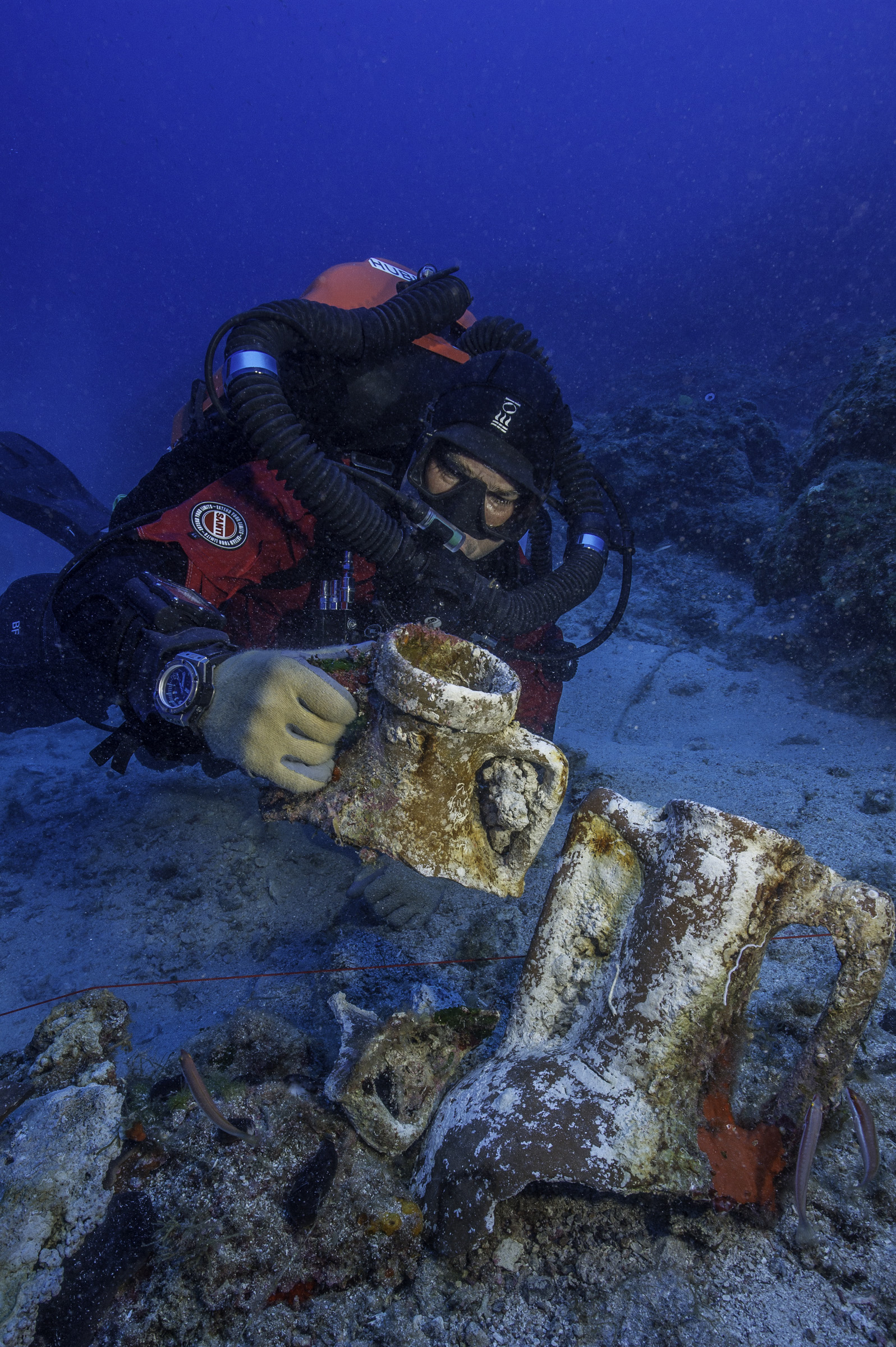The Antikythera Shipwreck (circa 65 B.C.) is famously known for the discovering of the Antikythera mechanism, one of the oldest known example of a computer. The mechanism was used to plot the cycles of star and planets and some have suggested its origins are from another world.
However this week an international team of researchers returned to the Antikythera wreck off the coast of the Greek Island of Antikythera searching for more hidden treasure. The team was led by archaeologist and technical experts from the Hellenic Ministry of Culture and Sports and Woods Hole Oceanographic Institution (WHOI).
Together the team was able to recover 60 artifacts including gold jewelry, luxury glassware, a bronze spear from a statue, elements of marble sculptures, resin/incense, ceramic decanters, and a unique artifact that may have been a defensive weapon to protect the massive ship against attacks from pirates.
“Our new technologies extend capabilities for marine science,” said Brendan Foley, a marine archaeologist with WHOI. “Every new dive on the Antikythera Shipwreck delivers gifts from the ancient past. The wreck offers touchstones to the full range of the human experience: from religion, music, and art, to travel, trade, and even warfare.”
The Antikythera Shipwreck, the largest ancient shipwreck ever discovered, was possibly a massive grain carrier. It was discovered and salvaged in 1900 by Greek sponge divers. In 1976, Jacques-Yves Cousteau and the CALYPSO crew returned to the wreck and recovered nearly 300 more objects, including skeletal remains of the passengers and crew.
To access the shipwreck, the team first used high-tech underwater robots to precisely map the 10,500 square-meters (2.6 acres) area of sea floor around the wreck. Once they had a detailed map technical divers using mixed-gas and closed-circuit rebreather descended to the shipwreck at 54 meter (170 feet).The dive team was tasked with pinpointing the exact locate of objects, documenting, and retrieve the artifacts.
Among other inquiries, the isotopes of recovered lead objects are analyzed to determine their origin, and ancient DNA is extracted from ceramic jars to reveal the food, drink, and medicines consumed by the ancient seafarers. The team was also able to generate precise three-dimensional digital models of every artifact, allowing discoveries to be shared instantly and widely even if the objects remain on the sea floor.
“Reality Computing is bridging the physical and digital world, ” said Autodesk Explorer-in-Residence Jonathan Knowles. “We see great potential in working with WHOI to capture, analyze, and share the wonders of Antikythera with the world. ”![[Left] Brendan Foley recovers a gold ring from the Antikythera Shipwreck. [Right] Professional technical diver Gemma Smith studies artifacts on the Antikythera Shipwreck. (Photos by Brett Seymour, EUA/WHOI/ARGO)](https://reefbuilders.com/wp-content/uploads/rd/2016/06/Anthikythera-Artifacts.jpg)
[Right] Professional technical diver Gemma Smith studies artifacts on the Antikythera Shipwreck. (Photos by Brett Seymour, EUA/WHOI/ARGO)
A complete list of Corporate partners and research team can be found here. [WHOI]
Spectacular artifacts discovered on the Antikythera Shipwreck
Share This


